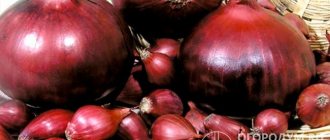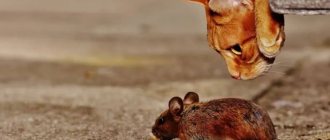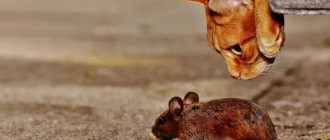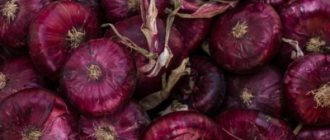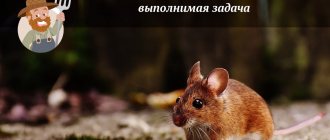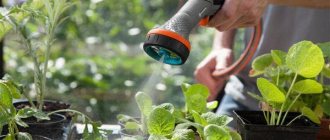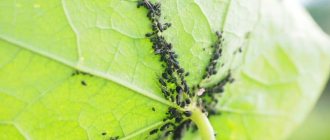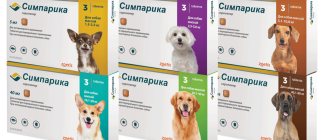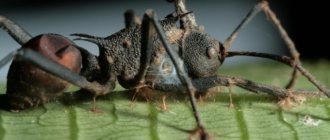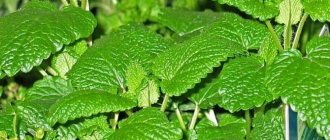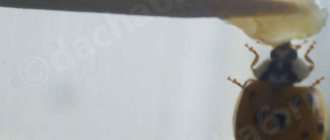A perennial or biennial herbaceous plant, blackroot is a member of the Borage family. Some types of such plants are not highly decorative, but in appearance they are very similar to simple weeds, often found on roadsides, wastelands and fields. Black root is also popularly called cat soap, burdock, dog root, night blindness, cynoglossum, and red henbane.
For a long time, people have known about the beneficial properties of this plant. It is widely used both in agriculture and in alternative medicine. The strong, unpleasant aroma emanating from the shoots and foliage of blackroot can repel any pest and rodent. Decorative varieties of blackroot are used to decorate the garden plot.
Botanical description
Blackroot is a perennial plant, less often a biennial plant, which is an erect herb up to a meter high. Botanical characteristics determine other names of the herb - night blindness, cynoglossum, cat soap or burdock. Despite the unpleasant smell, there are ornamental plant varieties that decorate gardens and are used in folk medicine. The perennial belongs to the weeds of the Borachnikov family.
The rhizome of blackroot is taprooted, quite strong and thick. Small adventitious roots extend from the main root, which reaches a thickness of 25 mm. Blackroot got its name from the color of the rhizome - it is black. The roots grow straight into the ground. Thus, the cynoglossum receives enough nutrients from the soil and grows quickly.
An erect stem extends from the base of the rhizome. The shoots are dense, light green in color. The length of the stems reaches a meter. Closer to the middle, the stem produces shoots that are covered with leaves. One plant usually contains a small number of stems - 2 or 3. However, a large number of shoots on top gives the bush lushness.
Alternate, bright green leaves are formed on the shoots and stem. The leaf blade is lanceolate, elongated; the leaves are attached to the stem by the base of the leaf blade, without a petiole. The surface of the leaf blade is covered with small white hairs. In the middle of the leaf blade there is a noticeable central vein, which gives the leaves a concave shape. The basal leaves are elongated, have a pointed end and a small petiole with which they are attached to the stem; the length of the leaf plate at the bottom of the plant can exceed 10 cm, and the length of the apical stems does not exceed 5 cm. The leaves are wide, up to 5 cm in the center. The basal leaves die off with the onset of flowering.
Blackroot blooms in early summer. The flowers are small inflorescences, up to 7 mm in diameter, collected in small panicles. Flowering is apical, inflorescences are located on long stalks. The inflorescences are funnel-shaped, located in green bracts. Depending on the variety, cynoglossum may bloom with red, purple or blue inflorescences. Blackroot blooms for a long time, lasting all summer. At the beginning of flowering, the panicles are small, but by the end of summer the inflorescences gain size and lengthen.
After flowering, fruits—pods with seeds—appear at the site where the buds form. The boxes are small nuts covered with hooks. The nuts are filled with small black seeds. The fruits ripen at the beginning of autumn, after which they fall into the ground and germinate.
Blackroot and all its parts have a distinctly unpleasant odor that repels insects. Therefore, shrubs are often planted in places where it is necessary to eliminate flies and pests. All parts of the grass are poisonous and dangerous to humans.
What's hidden in the name
Cynoglossum - rarely does anyone know that this is the name of a plant with blue forget-me-not flowers collected in panicles. Other names used popularly:
- black root; but the root is brown, the plant was named so because it belongs to the Blackroot genus;
- Chinese forget-me-not (it’s clear: the buds are blue, although without a yellow center, but they look like a wildflower - a cute forget-me-not; it came from China - Chinese);
- Likhodeyka - in old Rus' she did something bad, without a reason they wouldn’t call her such a name; this is understandable to those who know that the plant is poisonous;
- rat racer: where it exists, rodents will not live.
Lat. Cynoglossum (photo)
This is how people aptly described the main properties of this plant.
Spreading
The plant is a weed, therefore it is found in the form of thickets on wastelands, slopes of rivers and other bodies of water, along the edges of swamps and cliffs. The weed thrives along the edges of roads and in the areas of abandoned houses.
The habitat of Cynoglossum is the European part of the country. Blackroot lives in temperate climates. You can find wild thickets of night blindness in Central Asia and the Caucasus. Some varieties are hybridized and can grow as a cultivated plant. Hybrids take root well in almost any area.
What it looks like and where it grows
Blackroot officinalis (popularly known as dog's tongue, cat's soap, rat's root, dog's root) is a perennial plant from the borage family. The flower has several stems, often reaching a meter in height.
The color of the root is brown-red, the stem is thick and covered with fluff. In the upper part of the plant there are numerous lanceolate-shaped leaves.
Closer to the root, the leaves are longer and wider, and at the top they are elongated and short. Blackroot blooms from May to September with small purple-red flowers. In June, fruits appear on it in the form of small nuts with curved spines, which ripen closer to September.
A special feature of the flower is its unpleasant odor, which completely disappears after the plant dries. Some note that the plant emits a mousey aroma. Perhaps that is why it is a good raticide.
In the wild, poisonous black root bushes are found in ravines, on river banks, and near railroad tracks. If desired, it can also be grown in garden plots. It is recommended to collect the plant during the period of fruit ripening, that is, from the end of August to the beginning of September.
Types and varieties of black root
There are about 100 species of plants. Many varieties are used in economic activities and folk medicine. Wild varieties of blackroot are rarely used as ornamental shrubs, so today breeders have released new plant varieties that decorate gardens and park areas. In addition, there are indoor varieties of black root.
Blackroot cynoglossum officinale
Tall representative of night blindness. The grass is erect and can exceed a meter in height. The plant has a pubescent stem, thanks to spreading shoots and large leaves. Cynoglossum has medicinal properties due to its rich chemical composition.
The shrub has several stems directed in different directions. Opposite leaves of an elongated shape appear on the shoots along the entire length. The leaves are large in size - the length of the leaf plate reaches 20 cm, and the width is up to 6 cm. The leaf plate has smooth, sharp edges and a pointed end. The central vein is located in the middle of the leaf. The surface of the sheet is covered with felt and a layer of fibers.
Medicinal blackroot blooms at the beginning of summer. Flowering is abundant, apical. The flowers are reddish in color, collected in small racem-like panicles. The diameter of each inflorescence does not exceed a centimeter. The flowers are covered with green funnels, so they are almost invisible in the foliage.
Medicinal black root is widely used in folk medicine and human economic activities. In addition, the properties of the plant help people fight rodents and pests on arable land.
Blackroot pleasant cynoglossum amabile
Hybrid representative of “night blindness”. Used for decorative purposes. It is a wide spreading shrub of annual growth. An abundant number of erect shoots extend from the base of the plant, the length of which does not exceed 50 cm. The stems and shoots are completely covered with foliage, so the shrub looks like a green ball.
You might be interested in: Veynik
The leaves are elongated, dark green. the surface of the sheet plate is covered with a small layer of felt and fibers. A visible central vein runs down the center of the leaf, giving the leaves a concave shape. The leaves on the plant are arranged opposite each other.
The decorative appearance of the cynoglossum is made by panicles of bright blue inflorescences that appear on the blackroot in early summer. As it grows, the panicles and number of flowers increase in size. Therefore, the peak of decorativeness occurs at the end of July. The diameter of the flowers on the bush is about 1.5 cm. After flowering, fruits with seeds form in place of the buds. However, as a rule, the fruits do not withstand winter. Therefore, to propagate this species, the seeds are collected in dry containers and stored in a warm room during the winter. Sowing of seeds is carried out in early spring.
Cretan blackroot cynoglossum creticum
A low annual representative of the shrub. The height of the crop does not exceed half a meter. The plant has a strong stem, from which several adventitious shoots extend in different directions. The central part of the bush is strong, fleshy, and helps keep the grass upright even in strong winds.
The leaves are oval-shaped and located over the entire surface of the bush. Most of the foliage is located at the apical part of the bush. The basal leaves are large, pointed, and fall off at the beginning of flowering. The leaf plate has smooth edges. On the shoots, the leaves are arranged opposite each other. The foliage is dark shades of green.
Unlike other members of the genus, the Cretan blackroot blooms only towards the end of summer. The inflorescences are arranged in a panicle like a spiral, so as they bloom, the spiral increases in size. The petals of the variety are white, gradually changing the color of the calyx to a blue or pink tint.
German blackroot cynoglossum germanicum
Tall shrubs, representing shoots of grayish or green shades. The culture is heavily covered with foliage. Thanks to the green foliage, the plant has almost invisible stems and shoots. The leaves are flat, light green in color. The leaf plate is smooth, completely covered with a network of veins. The length of the leaves is about 20 cm, and the width reaches 5 cm. The basal leaves fall off before the perennial blooms.
The plant blooms with lilac flowers, not exceeding a centimeter in diameter. The flowers are collected in paniculate inflorescences, increasing in size with the appearance of new flowers. Flowering occurs in mid-summer. After the flowers ripen and fall, nuts are formed on the bush - fruits with seeds.
How to use against mice and rodents
This interesting plant is used to combat both rodents and various pests, such as aphids. In this case, all parts of the plant are used, such as leaves, stems, seeds and spines.
Surface treatment is carried out with a toxic solution by spraying or spraying. In case of numerous rodent infestations, the use of infusions and decoctions is recommended.
To prepare a working solution, you need to take 1 part of the roots or other parts of the plant and pour 5 parts of boiling water over them. After this, the solution must be infused in a sealed container for 2 hours. When the solution is infused, it is better to wrap it in some unnecessary thing, like a jacket or an old blanket.
In order not to wait for a long time, you can prepare a decoction of black root by simmering the product in a water bath for about 20 minutes.
Experienced gardeners and summer residents share their recommendations so that everyone can forget about these harmful creatures. As a rule, all recommendations can be easily followed without extra financial costs; it is enough to have the starting material - medicinal black root. You can’t do it without desire and patience, which are no less important.
How to protect your crops from rodent infestations:
For the first time, you will have to dig up the plant completely, with roots, and then place it in a place where pests appear. In subsequent years, it will be sufficient to use stems with seeds. With the arrival of autumn, parts of the plant are laid out in basements, sheds, and other outbuildings.
Particular attention should be paid to hard-to-reach places. Somewhere in late November or early December, it is better to scatter blackroot seeds on the veranda or in the house on the floor to protect the home from mice. This approach will allow you to spend the winter peacefully, without an unpleasant neighborhood in the house. To protect plants in a greenhouse, it is enough to place rat grass around it.
After such events, rodents and other pests are unlikely to appear in the greenhouse. In the apiary, it is advisable to plant this grass around the perimeter to protect the hive from the invasion of hungry rodents. Seeds of rat grass can be scattered into mouse or mole holes, which will force these pests to look for more comfortable living conditions. If you tie blackroot branches with seeds to the trunk of fruit trees at the height of the snow cover, this will protect the tree bark from mice and hares.
Care
Despite the fact that black root is not decorative, growing the flower is used for medicinal and economic purposes. However, to obtain flowers, the plant requires careful care and compliance with planting rules. In addition, proper care of hybrid representatives helps to grow a decorative bush that decorates the place in the garden bed.
Growing indoor varieties of blackroot occurs from seeds. Sowing is carried out in early spring, in containers filled with nutrient substrate. After permanent foliage appears, the seedlings are sown in their permanent habitat. Despite the fact that cynoglossum is winter-hardy, sowing hybrid seeds in open ground often does not give positive results.
The plants are quite unpretentious to grow and do not require much effort or care from a person. The culture easily adapts to high heat or frost, equally blooming with lush inflorescences. However, for good flowering, blackroot must be planted in bright areas with properly selected soil and a slightly acidic environment. It is also worth observing the rules for the proximity of the shrub to other plants, because blackroot is poisonous and should be planted away from food products and places where children play.
Illumination
In its natural environment, blackroot grows in well-lit areas. Most of the time the crop is in direct sunlight. Therefore, when growing night blindness in the garden, you should choose a bright place in advance. Shading is also suitable for shrubs, but in this case, the plant will not bloom so profusely, but the shrub will gain growth.
Constant stay in the shade is dangerous for cynoglossum. A shrub that has not received enough solar energy quickly fades and loses its decorative and beneficial properties. With a long stay in the shade, the shrub stretches its shoots, and the foliage seems withered and drooping.
Temperature
Sudden temperature changes are not dangerous for blackroot. The shrub tolerates heat and coolness equally well. Drafts are not dangerous for the crop either. However, strong winds can bend and break grown crops. Therefore, in the garden, grown bushes are tied to a support.
Air humidity
For cynoglossum, the amount of moisture in the air is not important. The plant is unpretentious and can remain in arid environments for a long time. However, with prolonged drought, the growth of the bush slows down. Therefore, when grown in garden conditions, the crop is irrigated as needed.
Watering
Blackroot does not tolerate stagnation of water in the soil. Dry soil is more favorable for crops than wet soil. Therefore, when planting, it is important to create a drainage layer at the bottom of the planting hole. Blackroot must be watered as needed. The average frequency of watering the crop is once a week. It is worth doubling watering when the inflorescences begin to form. Thus, flowering will last longer, and the number of buds will increase several times.
Perennial representatives overwinter in the ground. Therefore, by the time the fruits ripen, it is worth taking care to prepare the plant for wintering. To do this, after the fruits ripen, watering is gradually stopped. In the spring, after heat has formed, watering is resumed.
You will be interested in: Wild rosemary - features of growing and using a freedom-loving culture
Fertilizer
Blackroot extracts nutrients from the soil. Therefore, annual cynoglossum varieties do not require additional fertilizing and soil fertilization. However, the constant presence of perennial inflorescences in one place leads to soil depletion. Therefore, when growing perennials, it is worth taking care of a sufficient amount of nutrients in the soil.
Fertilizers for perennials are applied every two years. Organic fertilizers and mineral complexes are suitable as top dressing. Fertilizer is applied at the root of the plant in liquid form, being careful not to get on the leaves and flowers.
soil mixture
To plant blackroot in pots or as garden plants, you should choose nutritious soil with a high content of drainage and organic matter. The soil at the planting site must contain a slightly acidic environment. If the spruce soil contains a large amount of alkali, it is worth diluting it with limestone.
For indoor plants, you can purchase a special store-bought substrate. However, experienced gardeners prefer to make their own soil mixture for planting bushes. To do this, equal parts of peat and sand are mixed, a small amount of organic matter and mineral fertilizers are added. In addition, turf and garden soil, as well as humus, are added to the mixture. This composition has the optimal amount of components for the active growth of black root.
Transfer
Biennial and annual representatives of blackroot are not subject to transplantation. As a rule, only perennial crops are replanted to spread or enrich the soil with new bushes. To do this, the cynoglossum is carefully dug out of the ground. Since blackroot is poisonous, you must wear gloves. During transplantation, it is necessary to prepare a hole for the bush in advance.
The plant is carefully transplanted from one place to another, trying not to touch the rhizome. After transplantation, the crop is watered. With normal nutrient content, blackroot quickly takes root in a new location.
Bloom
Blackroot blooms in summer. Some varieties bloom in late summer, but most bloom already in May. During flowering, multi-colored paniculate inflorescences are formed on long stalks. Depending on the variety, the shrubs may bloom with white, purple, pink or lilac cups.
The flowers are small in size, but the combination of several buds collected in one brush gives the crop an unusual appearance. The panicles rise above the bushes, hanging down.
Trimming
Blackroot may not be pruned. The plant does not grow profusely and maintains its shape on its own. In addition, most of the foliage is located at the top, so the crop looks like a neat bush.
The plant reproduces by seed. To prevent the growth and formation of wild bushes, after the formation of fruits, they are plucked or pruned. In spring, perennial bushes get rid of the remains of dry grass.
Self-cultivation of black root
Black root is not an ornamental plant. However, growing it on your own plot will not be difficult. There are two ways to grow black root.
Sowing
Ripe blackroot seeds are collected in advance and sown in early spring like ordinary seedlings: about 3 centimeters into the ground. You can plant sprouts in open soil immediately after the plant produces its first leaves.
Ripe blackroot seeds acquire a brownish tint, and the hooks located on them harden
Transfer
In this case, take a young plant along with part of the root soil. Immediately after transplantation, the new location is lightly fertilized with ammonium nitrate.
It is worth noting that blackroot is unpretentious, like any weed. The plant does not require special care, and if it takes root, it can easily withstand minor droughts and even frosts.
Next year, manipulations with planting and replanting will no longer be required - the rooted plant will produce new shoots on its own. You just need to make sure that the black root does not spread further than necessary.
Wintering
Blackroot is considered a frost-resistant shrub. Annual plants wither and dry out after the first frost. In this case, it is advised to pull out the bush and give the soil a rest from excess roots. Perennials require little preparation for winter.
After the fruits ripen and the first frosts appear, perennial blackroot representatives are pruned, leaving a distance of several centimeters above the surface. If the crop is planted in places with severe winter frosts, additional shelter is created for the crop.
A layer of spruce branches or dry grass is suitable as a cover. In addition, some gardeners use the cut above-ground part of the crop as a shelter. After the end of severe frosts, the crop is opened and the blackroot is allowed to prepare for new growth and flowering.
How to use against caterpillars, aphids
In addition to its raticidal characteristics, night blindness copes well with attacking harmful insects, exerting a deadly effect on them. Agrochemists recognize the effectiveness of the weed and recommend its use primarily for those owners who are afraid of pesticides in their gardens. After all, the result is in no way inferior to known chemical insecticides.
If caterpillars and aphid colonies appear in a garden bed or flower garden, it is quite possible to save the vegetation by sprinkling an infusion of black root. To prepare it, you will need 2 tablespoons of crushed raw materials (preferably dry) per liter of boiling water. After pouring water over the grass, cover it with a lid, wrap it in a warm towel and let it brew for several hours. Then pour into a spray bottle and generously spray the affected plant so that the liquid drains from it.
Reproduction
Wild varieties of cynoglossum reproduce by self-seeding. However, to grow hybrid varieties and indoor crops, you need to take care of collecting planting material. If necessary, perennials can be propagated using seeds or cuttings.
The main importance for breeding cynoglossum is the formation of seedlings. To obtain seedlings, the seeds of the plant are first collected, which are collected and stored in dry bags immediately after ripening.
Sowing is carried out in the spring. To do this, nutrient soil is poured into pre-prepared containers. The ground is watered abundantly, after which small grooves are made. An even layer of seeds is poured into these grooves. After sowing, the grooves are buried with earth, and the container with the plants is placed in a bright, warm place. To speed up the rate of emergence of seedlings, some gardeners cover the sowing hills with film to create greenhouse conditions. After germination, the shelter is removed and care is carried out in the usual way.
Frail seedlings do not try to water, since weak stems quickly break. To irrigate the soil, sprayers are used to spray the soil. After the formation of several permanent leaves, the blackroot begins to be taken out into the open space and hardened. In addition, grown seedlings can be planted.
In the spring, after the soil has dried and constant heat has formed, the seedlings are placed in open ground, where the plant is regularly cared for. Seedlings are not afraid of slight changes in temperature, so the crop does not require additional shelter immediately after planting in the soil. When planting in open ground, maintain a distance of about 30 cm between seedlings.
Where can I buy the miraculous black root?
In searching for this plant, owners often encounter difficulties caused by various factors. Thus, black root does not grow everywhere; in addition, its flowering period is not very long, so it is not always possible to collect and dry the crop on time. Growing a rat racer yourself is problematic, and you can’t buy it everywhere. Therefore, one of the questions that acutely faces summer residents is related to where to buy medicinal black root for mice.
Numerous sites on the Internet offer delivery services for any variety of useful herbs; suppliers are always ready to answer questions and provide complete information regarding a particular crop and the method of its use and cultivation. Another option for finding blackroot is to contact experienced gardeners, many of whom send the necessary seeds free of charge, without requiring payment in return. But even if you couldn’t find a free plant, you shouldn’t despair. Despite the many advantages of blackroot, it will not cost very much, and its purchase will definitely be the right decision, especially when it comes to such an important procedure as the fight against mice and rats.
Diseases and pests
The chemical composition of black root gives a positive effect not only for others, but also for the culture itself. The aroma, which thins the plant, repels pests and insects. Therefore, the plant is not attacked by pests. The plant is quite stable and unpretentious in cultivation. In addition, the plant itself is used to repel pests - rodents.
Blackroot is rarely susceptible to various diseases. The only thing the culture is afraid of is stagnation of water in the roots. In this case, the bush quickly withers and the rhizome rots. Having eliminated the problem, the culture grows rapidly.
You might be interested in: Thyme
Interesting facts and useful tips
A captured mouse, placed in a cage with a black root, will die within twenty minutes in agony from paralysis of the central nervous system.
The spiny fruit-nuts, firmly attached to the animal's coat, cause a lot of inconvenience to the rodent: not only does it experience attacks of suffocation, but it also cannot move normally. As a result, the animal may die, if not from disruption of the nervous system, then certainly from hunger.
Any work with the plant is carried out with gloves, and afterward be sure to thoroughly wash your hands in running water and soap.
Always make sure that pets and children do not have contact with blackroot, after all, it is poison and you need to be careful!
Application
Black root has found its use in folk medicine and in households. The plant is not a recognized pharmacopoeial plant, but the chemical composition of the plant determines the widespread use of the culture in folk medicine. Black root is also used in the household as a rodent control agent.
In medicine
Medicinal black root is used for medicinal purposes. The rich chemical composition of the plant allows it to be used to improve the health of the body. In folk medicine, there are enough recipes for preparing decoctions and infusions from parts of the plant, for the treatment of pathologies of the musculoskeletal system and in homeopathy. The plant has a calming and astringent effect. Used to treat bronchopulmonary pathologies. External use of black root-based products helps to cope with allergy symptoms - itching and redness.
The plant has a number of medicinal properties. Thus, the plant is used to relieve pain in muscles and joints. In addition, the plant is rich in substances that accelerate the healing of wounds and burns. However, the plant must be used with caution, since changing and increasing the dosage can lead to the development of serious complications.
Traditional medicine uses black root to combat stomach bleeding caused by peptic ulcers. In addition, a decoction of parts of the plant helps fight diarrhea and other gastrointestinal disorders. An infusion of black root roots is used as a medicinal plant.
To prepare the infusion, take a tablespoon of crushed dry roots of the plant. The mixture is poured into a container and poured a glass of boiling water. Then the resulting mixture is infused for 2 hours. The finished composition is filtered. Before use, the infusion is diluted in clean water in a ratio of 1:30. Take orally, three times a day, 1 teaspoon of the product.
The fresh juice of the plant is also used for medicinal purposes. To eliminate pain in the musculoskeletal system and stomach diseases, I take 2 drops of fresh juice 3 times a day, diluted with water.
At home
Blackroot is widely used as an insecticide. The chemical composition of the plant and its poisonous properties have become a natural means of combating rodents that often attack home gardens. A decoction of plant parts also helps fight various caterpillars that eat the crop.
A decoction of black root leaves is used as an insecticidal agent. To obtain it, 300 g of dry leaves of the plant are poured with 10 liters of water. The resulting mixture is boiled for half an hour and then cooled. Add a ground piece of laundry soap to the resulting mixture. The mixture is used to treat crops on the site.
To eliminate rodents
With the help of blackroot it is possible to remove not only insects from plantings, but also rodents. The culture has a pungent odor that rats and mice cannot stand. Therefore, to eliminate rodents, the walls of basements, sheds and barns are treated with a ready-made decoction.
To eliminate mice, a decoction is made from the roots of the plant. Some people scatter dry grass in storerooms and cellars. Scattering foliage and roots of blackroot near fruit plants and plantings is also effective. Blackroot located next to the crop will prevent rodents from appearing near the plantings.
Beekeepers also use the plant to protect hives from rodent attacks in winter. The plant is safe for bees, so you can often see blackroot plantings around the apiary. In addition, copious amounts of nectar attract bees.
Contraindications
The medicinal black root plant contains many toxic substances. It is recommended to use it externally, and for internal use, the dosage should be carefully observed.
It is necessary to completely abandon the use of the plant:
- during pregnancy;
- in the presence of individual allergies;
- during lactation;
- with exacerbation of gastrointestinal ailments;
- for serious chronic heart diseases;
- with liver failure.
Products based on medicinal black root should not be offered to children under 12 years of age. In adolescence, the use of herbal raw materials must be agreed with a doctor.
Blackroot in landscape design
Blackroot bushes are sometimes used to decorate small flower beds. Neat crops that grow upward are used to decorate house paths and to decorate lawns. The plant is also grown in open ground, on balconies and as indoor plants.
In garden conditions, black root combines effectively with other tall plants - verbena, asters, snapdragons, dahlias. The peculiarity of the plant is that cut black root can decorate rooms for more than two weeks.
Growing from seeds
To propagate blackroot, gardeners use the seed method. Seed material is collected from bushes of the first or second year of life. Fully ripened fruits, covered with thorns, easily open and the seeds spill out onto the surface of the plot. They can also cling to clothing.
Blackroot has high winter hardiness, and therefore its seed material is often sown directly in open ground. This is done in the autumn, and the seeds must be buried 20–30 mm into the soil. Don't forget to water your crops systematically.
Seedlings should appear in spring. They look like small rosettes consisting of long leaf plates. If necessary, transplant the bushes to another place, but they must be moved along with a large lump of earth. In order to increase the rate of rooting of the seedling, ammonium nitrate and Kornevin should be poured into the prepared hole.
Danger to people and pets
Blackroot is a poisonous plant. Therefore, it may be dangerous to people and pets. Plants are planted away from children’s play areas. It is unacceptable to use black root as food for people and livestock. The poison contained in the culture can cause serious complications. Therefore, black root should not be used in high dosages.
A limitation to the use of cynoglossum decoctions and infusions is an allergic reaction to the components of the decoction. If signs of poisoning or irritation occur, you should immediately seek qualified help.
Beneficial features
Blackroot juice contains essential oils, resins, alkaloids, tannins and dyes, and also coumarins. The stems and rhizomes of such a plant are used as medicinal raw materials. Products made from them have a calming, strengthening, antimicrobial, anti-inflammatory and analgesic effect.
Lotions and ointments are used externally for irritations on the skin, as well as for boils and burns. Decoctions and tinctures are used for malignant tumors in the gastrointestinal tract, as well as for inflammation or intestinal disorders. A decoction of black root is used to prepare baths that reduce pain from arthritis or bone fractures.
Preparation and storage
The medicinal value comes mainly from the leaves and roots of Cynoglossum. The rhizome is harvested at the end of active growth of the bush. To do this, the plant is dug out of the ground, the roots are washed and dried. It is necessary to dry the roots in well-ventilated areas, in a dark place. As one side dries, the roots are turned over. Store raw materials in dry places, in paper or fabric bags.
The leaves are collected during the period of active flower growth. In the spring, with the appearance of young shoots, the foliage is collected and laid out in an even layer in a cool, dark place. For drying, you can use dryers whose temperature does not exceed 35 degrees. After drying, the grass is placed in dry fabric bags.
Precautionary measures
The plant is poisonous and simple precautions must be taken when using it. For example:
- Blackroot officinalis must be prepared and laid out exclusively while wearing gloves.
- After handling the grass, it is better to wash your hands well with soap.
- It is necessary to take all measures to ensure that neither children nor animals come into contact with the grass.
Poisonous herbal baits
In addition to the repellent smell, you can make poisonous baits. To prepare them, plant roots are taken.
The four-leaf raven's eye does its job well. The smell of the root of this plant causes headaches in people. For bait you need to mix rhizomes and sunflower seeds.
All underground parts of aconite antivenom can be used in the fight against rodents. To do this, it must be dried and ground into powder. Aconite powder is added to bait made from edible products.
Aconite antidote
Lobel's hellebore copes well with its assigned tasks. The rhizomes need to be infused. Grain is added to the infusion and left until it swells.
Autumn colchicum is popular because all its parts are poisonous. For bait, mix any cereal or flour with its seeds.
Various seeds can be used. Castor bean seeds, to which vegetable oil is added, help. Or use Thermopsis lanceolata, the seeds of which are mixed with bread.
You need to remember safety precautions when working with such plants. Under no circumstances should you touch them without gloves. Skin burns are not the worst consequences of improper handling.
How to kick out unwanted guests is up to everyone to decide for themselves. It is better to use humane methods to eliminate rodents, since you will not have to watch their death and remove the corpses. The main thing is not to harm yourself and your pets while fighting rodents.
Fighting mice in different ways
I tried many methods in the fight against mice. I tried all the recommendations and advice I came across on this topic.
I bought all kinds of poison against mice in large quantities. The mice will eat the poisonous food laid out everywhere, then they will snack on the radish shoots and my cabbage seedlings, and they will disappear for a while. And after a while, new tailed “guests” from neighboring areas appear in the garden shed and greenhouse, and again I begin to struggle with mice.
Some of the folk remedies used to fight mice in my garden did not have any effect on the rodents at all. For example, turntables installed in greenhouses or felt boots being burned there (after a day there was no trace left of the smell in the greenhouse).
One day I heard about the miraculous herb “black root”, which repels mice, and began to look for the seeds of this useful plant. I couldn’t find them in stores, but a gardener I knew helped out and shared blackroot seeds with me.
